Switzerland, renowned for its banking system and centuries-long neutrality, is not only known for these traits but also boasts a remarkable collection of magnificent castles and manor houses. However, due to its 500-year absence from battles, the number of fortresses and castles in Switzerland is comparatively lower than in other countries. Despite this, the country has managed to maintain its de facto neutral status for centuries.
Interestingly, Switzerland’s disengagement from battles coincided with the development of its world-renowned banking system in the 16th century. It’s quite remarkable how securing financial stability for numerous nations can deter potential attacks from other countries. In a way, they have found a unique method to avoid costly wars.
Nonetheless, Switzerland still possesses a handful of impressive castles that are worth exploring. Below, we present a list of the finest castles:
1. Castle Wildegg
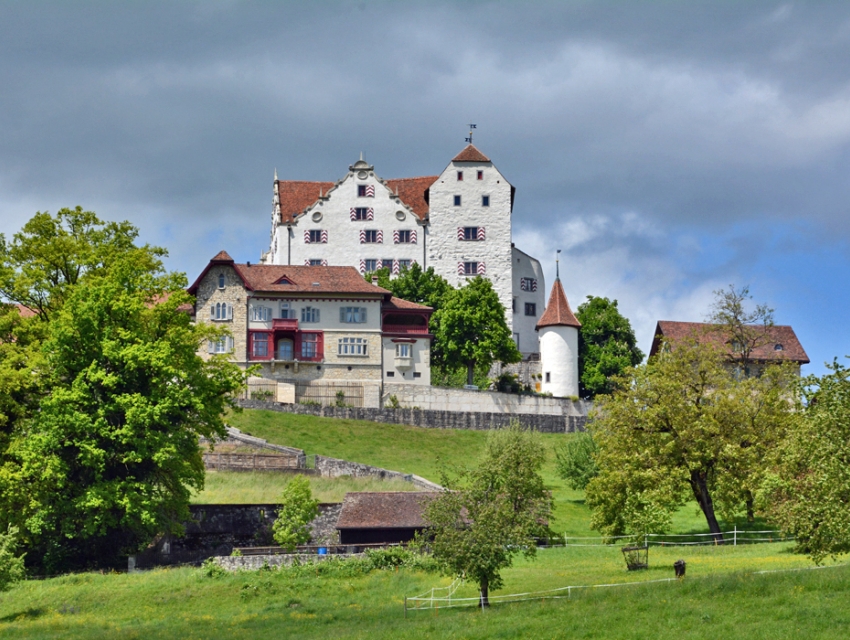
Schloss Wildegg, situated in Möriken-Wildegg, Switzerland, was constructed by the Habsburgs in the early 13th century. The castle remained under the ownership of the Effinger family for eleven generations until Julie von Effinger, the last descendant, passed away in 1912. The castle was then entrusted to the Confederation and subsequently handed over to the National Museum for administration. Nowadays, Castle Wildegg is owned by the Canton of Aargau and is open to the public.
Details about Castle Wildegg:
Location: Wildegg, Switzerland
Construction Period: 13th Century
Builder: The Habsburgs
Architectural Style: Baroque
Current Status: Open to the public
Current Owner: Canton of Aargau
2. Vufflens Castle

Vufflens Castle, situated in Vufflens-le-Château, Switzerland, is a medieval castle that was built in 1425 on the site of a previous structure. Henri de Colombier, a notable figure, constructed the earlier medieval castle. Unfortunately, the original structure was destroyed by Bernese troops in 1530. Nevertheless, Vufflens Castle stands today as a private property and is recognized as a Swiss Cultural Property of National Significance.
Details about Vufflens Castle:
Location: Vufflens-le-Château, Switzerland
Construction Period: 15th Century
Builder: Lords of Vufflens
Architectural Style: Medieval
Current Status: Private property / Swiss Cultural Property of National Significance
Current Owner: Famille de Saussure
3. Valère Basilica
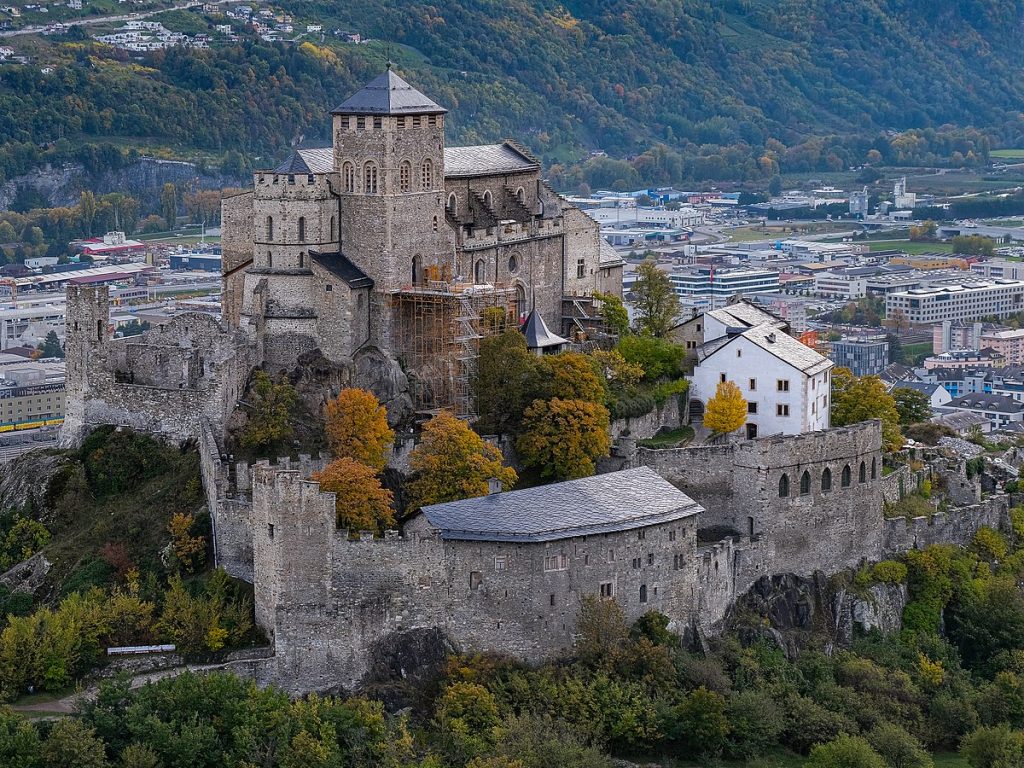
The Valère Basilica, located in Sion, Switzerland, within the canton of Valais, is a fortified church of great historical significance. It was built in the 13th century, showcasing a remarkable blend of Romanesque and Gothic styles. The basilica continues to serve its purpose as a Minor Basilica under the administration of the Roman Catholic Diocese of Sion.
Details about Valère Basilica:
Location: Sion, Switzerland
Construction Period: 13th Century
Builder: Unknown
Architectural Style: Romanesque/Gothic
Current Status: Minor Basilica
Current Owner: Roman Catholic Diocese of Sion
4. St. Maurice Fortress
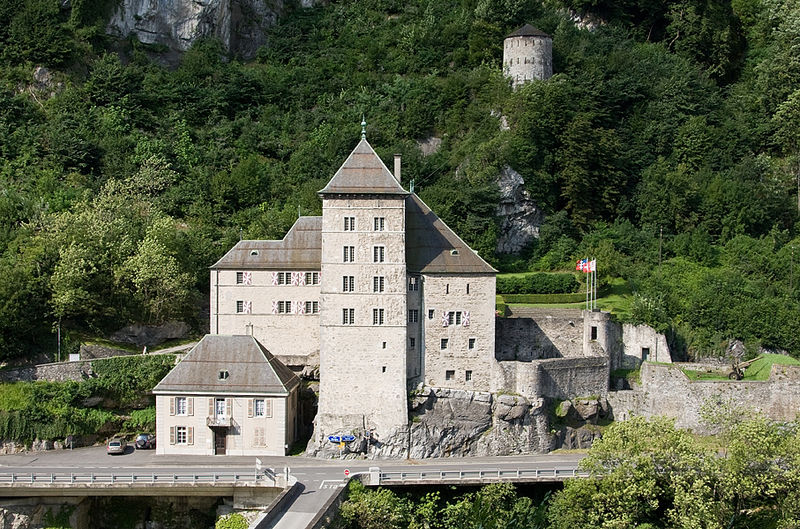
St. Maurice Fortress is part of the Swiss National Redoubt, along with Fortress Saint Gotthard and Fortress Sargans. These fortresses were established to safeguard the central alpine region of Switzerland against potential invaders. St. Maurice Fortress, built in a Baroque style, holds historical significance and is considered a deactivated fortress or a potential historical monument.
Details about St. Maurice Fortress:
Location: Swiss National Redoubt, Switzerland
Construction Period: 20th Century
Builder: Unknown
Architectural Style: Baroque-style Fortress
Current Status: Deactivated Fortress / Potential historical monument
Current Owner: Government of Switzerland
5. Schloss Stockalper
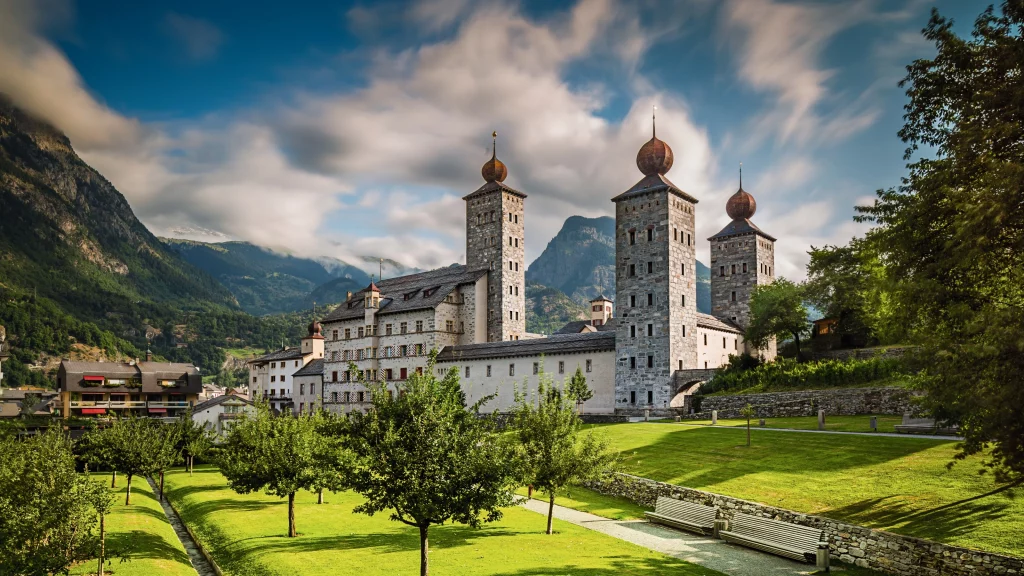
Constructed in the 17th century by Kaspar Stockalper, a prosperous silk merchant, Schloss Stockalper is a castle located in Brig-Glis, Switzerland. Kaspar expanded and modified the original Stockalper House, which had been erected by Peter Stockalper. Despite facing opposition from several communities, Kaspar managed to complete the castle. The city of Brig-Glis now owns and operates the castle, which has become a popular tourist attraction and holds the status of a Swiss Cultural Property of National Significance.
Details about Schloss Stockalper:
Location: Brig-Glis, Switzerland
Construction Period: 17th Century
Builder: Kaspar Stockalper
Architectural Style: Italian-Renaissance
Current Status: Tourist attraction / Swiss Cultural Property of National Significance
Current Owner: City of Brig-Glis
6. Château de Spiez
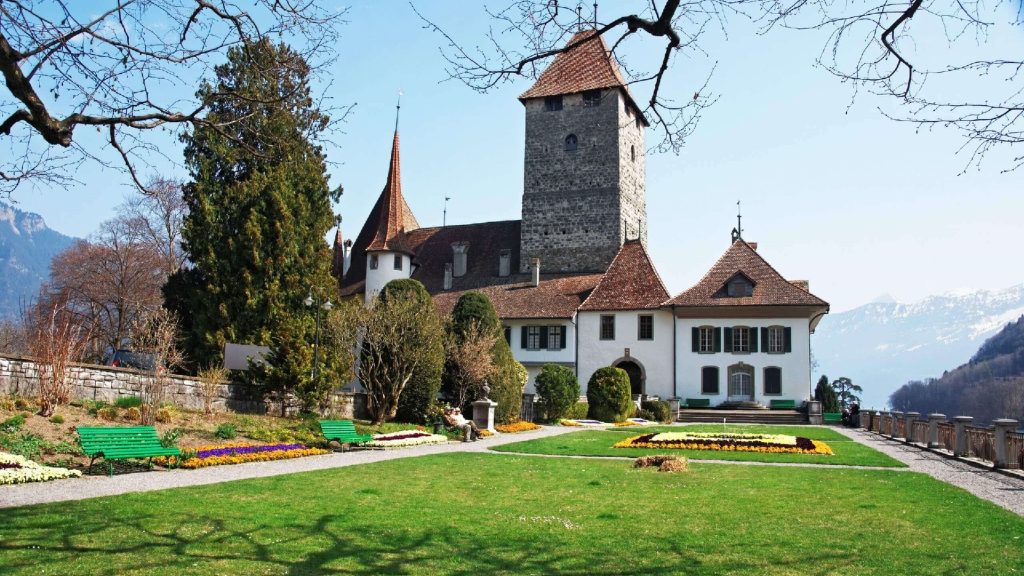
The Spiez Castle, also known as Schloss Spiez, is a Swiss heritage site located in the municipality of Spiez in the canton of Bern. This castle, built by the King of Burgundy, Rudolph II, in the 10th century, has a rich history. Over time, it underwent expansions and renovations, transforming it into a splendid example of late Baroque architecture. Eventually, the castle was acquired by a foundation, allowing the public to explore its gardens.
Details about Château de Spiez:
Location: Spiez, Switzerland
Construction Period: 10th Century
Builder: King of Burgundy, Rudolph II
Architectural Style: Baroque
Current Status: Swiss Cultural Property of National Significance
Current Owner: Municipality of Spiez
7. Schloss Arenenberg

Originally serving as a patrician residence in Constance, Schloss Arenenberg was constructed in the 19th century as the imperial French family’s residence. Queen Hortense, the adopted daughter and sister-in-law of Napoleon I, ruled her kingdom from Schloss Arenenberg, along with her son Prince Louis Napoleon, who later became Emperor Napoleon III.
Details about Schloss Arenenberg:
Location: Salenstein, Switzerland
Construction Period: 16th Century
Builder: Sebastian Geissberg, Mayor of Constance
Architectural Style: French Empire
Current Status: Napoleon Museum
Current Owner: Canton Thurgau
8. Schadau Castle
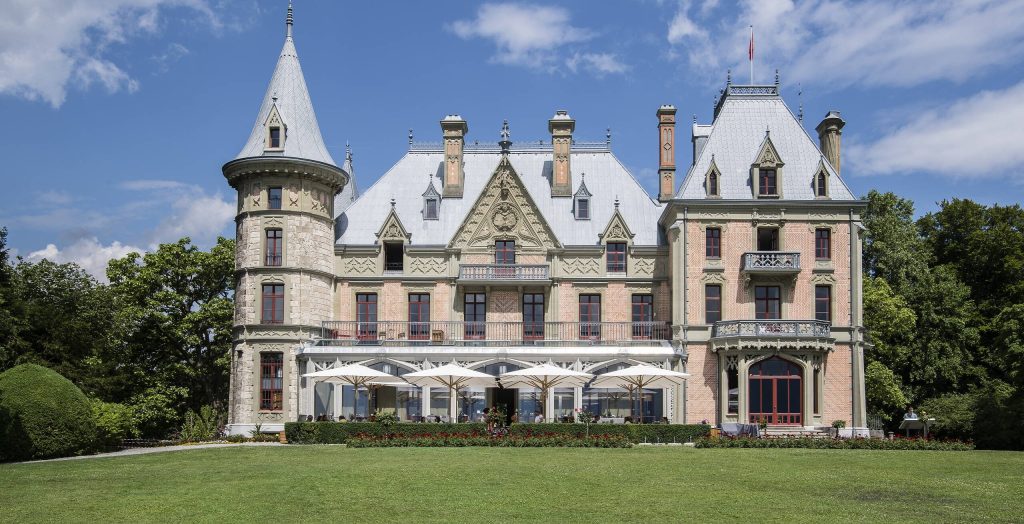
Situated on the southern side of the Aar near Lake Thun in the city of Thun, Canton Bern, Switzerland, Schadau Castle is a Swiss heritage site of national significance. Built between 1846 and 1854, it exhibits the remarkable Gothic Revival architectural style. Architect Pierre-Charles Dusillon was responsible for the castle’s construction under the direct command of banker Abraham Denis Alfred de Rougemont.
Details about Schadau Castle:
Location: Thun, Switzerland
Construction Period: 19th Century
Builder: Pierre-Charles Dusillon
Architectural Style: Gothic Revival
Current Status: Swiss Heritage site of National Significance
Current Owner: City of Thun
9. Oberhofen Castle
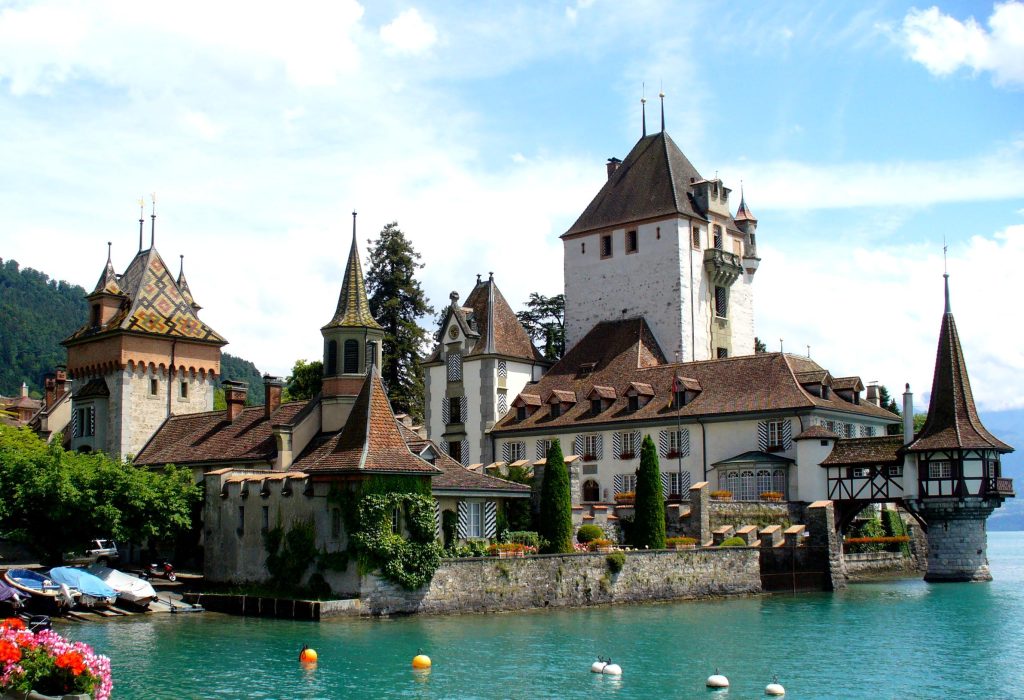
Oberhofen Castle, situated in the Canton of Bern, Switzerland, is a Swiss heritage site of national significance. Constructed in the 13th century, it passed through several owners and families until it was purchased by the Pourtàles family. They renovated and expanded the castle in the 19th century, giving it the Baroque and Romantic style it showcases today. Currently, it functions as a public museum, providing insights into its rich history.
Details about Oberhofen Castle:
Location: Canton of Bern,
Switzerland
Construction Period: 13th Century
Builder: Renovated and expanded by the Pourtàles family
Architectural Style: Baroque architecture / Romantic style / Water-Castle
Current Status: Swiss Heritage site of National Significance / Public Museum
Current Owner: Freiherr, now Historical Museum of Bern
10. Neuchâtel Castle
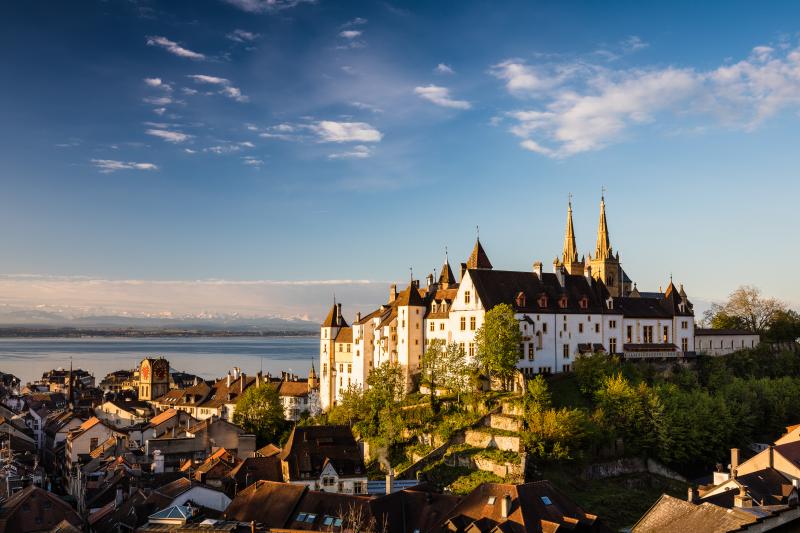
Neuchâtel Castle, located in the Canton of Neuchâtel, Switzerland, derives its name from the municipality of Neuchâtel. This castle, believed to have been a gift from Rodolphe III, King of Burgundy, to his wife in 1011, has a rich history. Over the centuries, it served as the residence of several noble families and even became the home of the King of Prussia in the early 18th century.
Details about Neuchâtel Castle:
Location: Canton of Neuchâtel, Switzerland
Construction Period: 10th Century
Builder: Unknown
Architectural Style: French Renaissance style
Current Status: Swiss Heritage site of National Significance
Current Owner: Canton of Neuchâtel
11. Lenzburg Castle
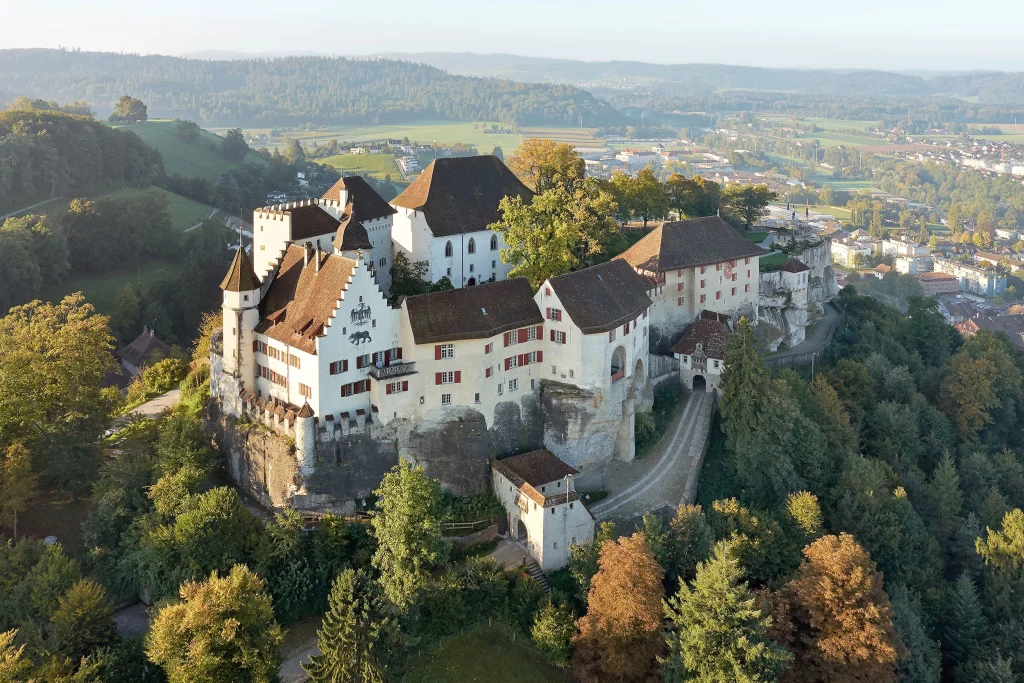
Lenzburg Castle, one of Switzerland’s oldest and most historic hilltop castles, has a captivating legend associated with its construction. According to the tale, two knights named Wolfram and Guntram defeated a living dragon on the hillside. In gratitude, the people appointed them Counts of Lenzburg and allowed them to construct their castle on the hilltop. Ownership of Lenzburg Castle passed through several royal families until it was acquired by the City of Lenzburg and Canton of Aargau. Today, it is open to the public.
Details about Lenzburg Castle:
Location: Lenzburg, Switzerland
Construction Period: Unknown
Builder: Unknown (Wolfram and Guntram in the legend)
Architectural Style: Gothic style / French style
Current Status: Open to the public
Current Owner: City of Lenzburg
12. Hünegg Castle

Hünegg Castle, located in Hilterfingen, Switzerland, is a Swiss heritage site of national significance. It was constructed between 1861 and 1863 for the Prussian Baron Albert Emil Otto von Parpart. After Baron Parpart’s death in 1869, the castle changed hands several times. Today, it serves as the Renaissance Revival and Art Nouveau Museum.
Details about Hünegg Castle:
Location: Hilterfingen, Switzerland
Construction Period: 1861-1863
Builder: Prussian Baron Albert Emil Otto von Parpart
Architectural Style: Renaissance style
Current Status: Renaissance Revival and Art Nouveau Museum
Current Owner: Canton of Bern
13. Heidegg Castle

Heidegg Castle, situated in Hitzkirch, Switzerland, is a Swiss heritage site of national significance. Originally built in the 13th century as the manor for the noble Heidegg family, the castle has since been transformed into a living museum that offers entertaining activities for visitors.
Details about Heidegg Castle:
Location: Hitzkirch, Switzerland
Construction Period: 12th-13th centuries
Builder: Heidegg family
Architectural Style: –
Current Status: Living museum
Current Owner: Canton of Lucerne
14. Hallwyl Castle

Hallwyl Castle, located in Seengen, Switzerland, is considered one of the most important moated castles in the country. Built in the 13th century as the home castle of the Lords of Hallwyl, it fell into neglect for an extended period until it was restored during the 19th century. Today, the castle is open to the public and is owned by the Canton of Aargau.
Details about Hallwyl Castle:
Location: Seengen, Switzerland
Construction Period: 12th-13th centuries
Builder: Lords of Hallwyl
Architectural Style: Gothic style
Current Status: Open to the public
Current Owner: Canton of Aargau
15. Chateau de Tourbillon

Tourbillon Castle, situated on a hill in Sion, Switzerland, faces the Basilique de Valère located on the opposite hill. This Swiss heritage site was built between 1290 and 1308 by the Bishop of Sion, Boniface de Challant, as his primary residence. Although the castle was destroyed by fire in 1788, it was restored in multiple phases, with the most recent renovations occurring between 1966 and 1996.
Details about Tourbillon Castle:
Location: Sion, Switzerland
Construction Period: 1290-1308 centuries
Builder: Boniface de Challant
Architectural Style: Gothic style
Current Status: Open to the public
Current Owner: Government of Sion
16. Chateau de Chillon
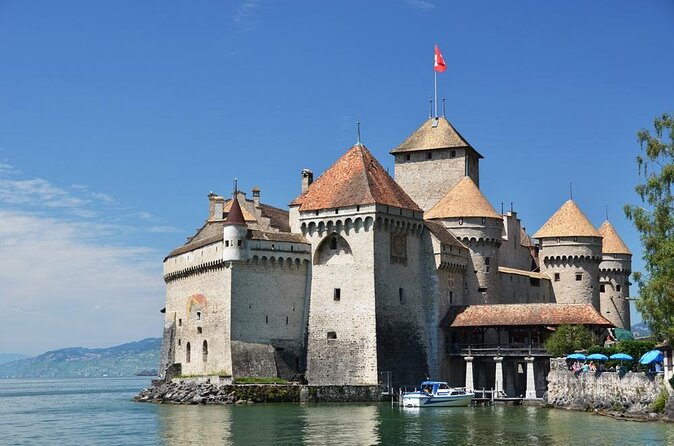
Chillon Castle, situated on an island in Lake Geneva, is one of Switzerland’s most famous historic buildings. It was the residence of the Counts of Savoy from the 12th to the 16th century. Believed to have been constructed around the 10th century, the castle underwent renovations at the end of the 19th century. Presently, it is owned by the State of Vaud and classified as a Swiss Cultural Property of National Significance.
Details about Chateau de Chillon:
Location: Vaud, Switzerland
Construction Period: 10th century
Builder: Unknown
Architectural Style: Medieval architecture
Current Status: Historic monument / Swiss Cultural Property of National Significance
Current Owner: State of Vaud
17. Château d’Aigle
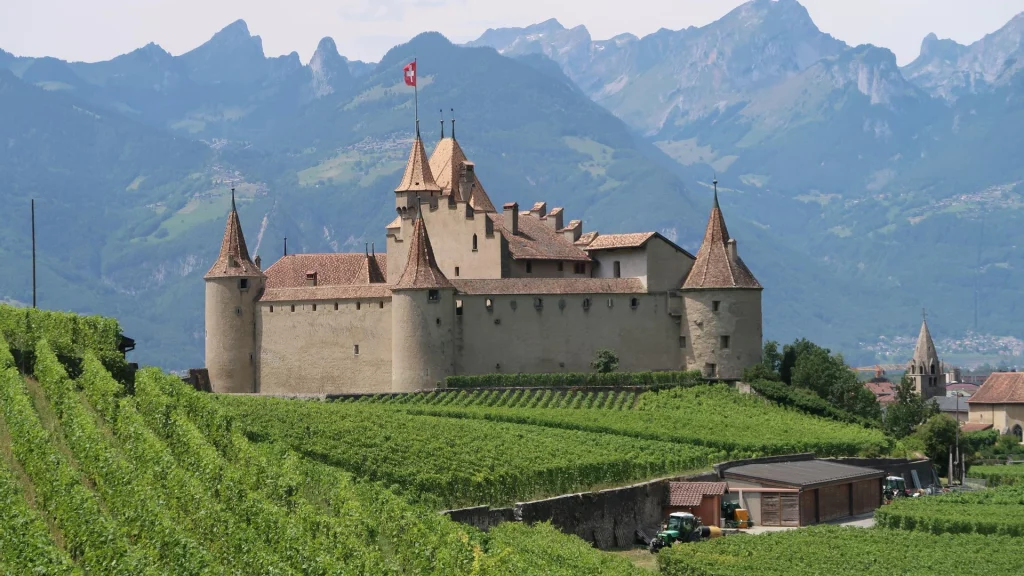
Aigle Castle, located in the municipality of Aigle, Switzerland, is a Swiss heritage site of national significance. Originally built in the 12th century by the family of the Knights of Eagle, the castle underwent significant renovations over the centuries. It was eventually acquired by the Municipality of Aigle in the late 18th century and currently serves as a museum open to the public.
Details about Château d’Aigle:
Location: Aigle, Switzerland
Construction Period: 12th century
Builder: Knights of Eagle, the Militias of Allio
Architectural Style: Gothic style
Current Status: Museum / Open to the public
Current Owner: Municipality of Aigle
18. Champvent Castle
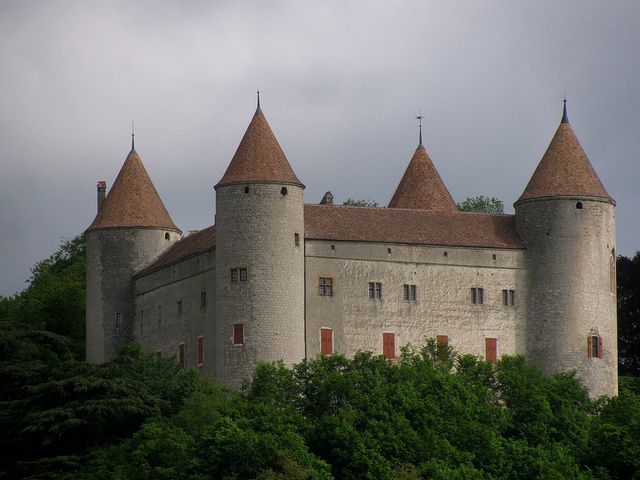
Champvent Castle, located in the municipality of Champvent, Switzerland, is among the Vaudois fortresses that have preserved their medieval appearance. It is recognized as a Swiss Cultural Property of National Significance and is believed to have been built during the 13th century in the Byzantine architectural style.
Details about Champvent Castle:
Location: Champvent, Switzerland
Construction Period: 13th century
Builder: Unknown
Architectural Style: Byzantine architecture
Current Status: Swiss Cultural Property of National Significance
Current Owner: Government of Champvent
19. Castle of Gruyères
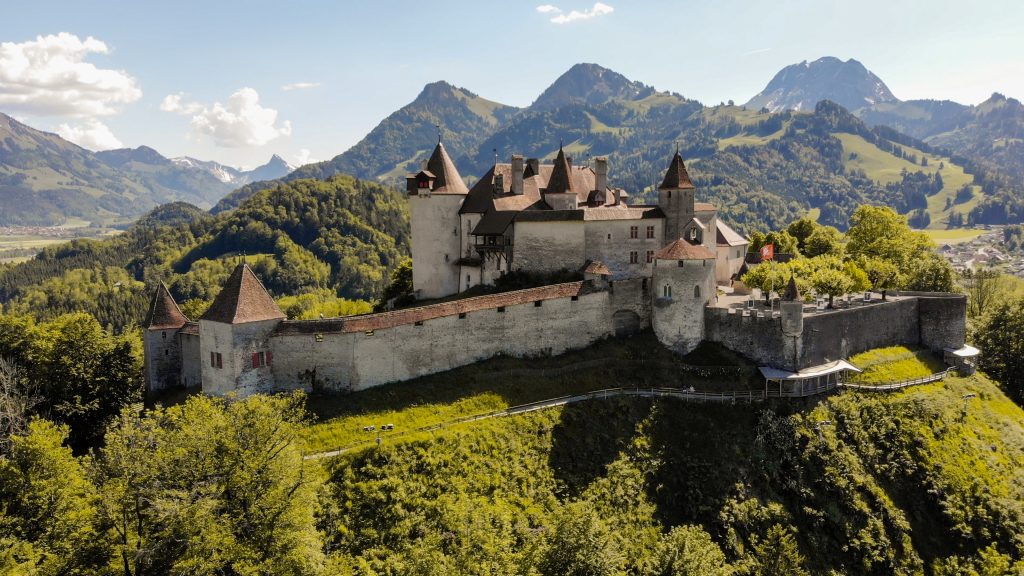
The Castle of Gruyères, situated in the medieval town of Gruyères, Fribourg, is one of the most renowned castles in Switzerland. Built in the late 13th century, it was initially owned by the Counts of Gruyères until financial difficulties forced them to sell the castle. The Canton of Fribourg repurchased the castle in 1938 and converted it into a museum open to the public.
Details about Castle of Gruyères:
Location: Fribourg, Switzerland
Construction Period: 13th century
Builder: Unknown
Architectural Style: Medieval architecture
Current Status: Museum / Open to the public
Current Owner: Canton of Fribourg
20. Nyon Castle
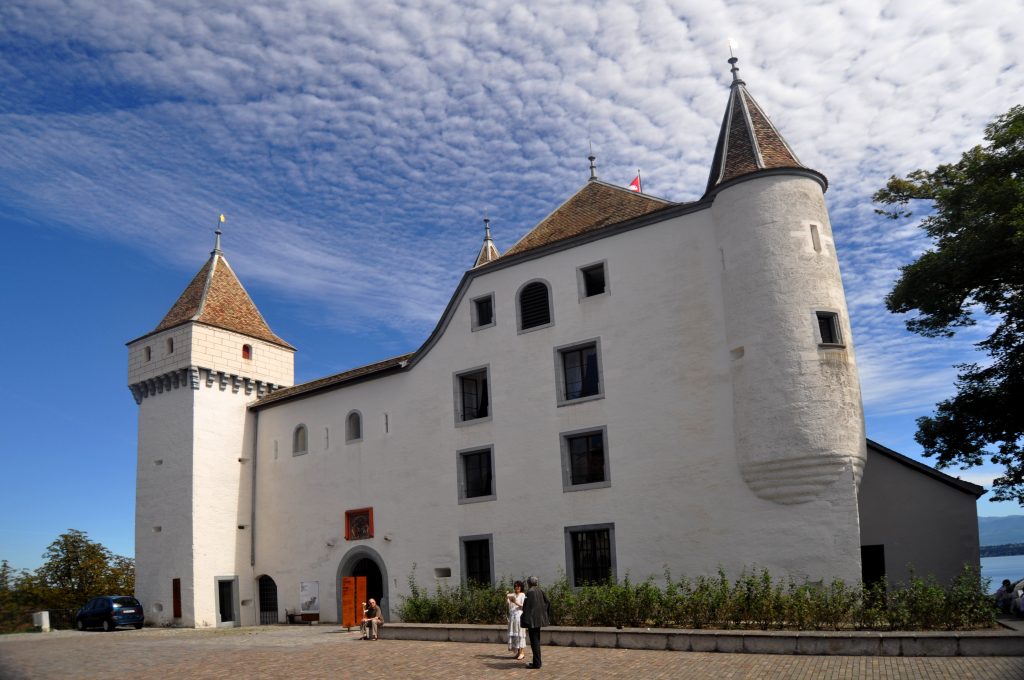
Nyon Castle, located in the municipality of Nyon, Switzerland, is a Swiss heritage site of national significance. It was rebuilt in the 13th century by Ludwig I of Savoy and later served as the seat of the bailiff when the Swiss Confederation invaded Vaud in 1530. The castle underwent multiple renovations over the centuries while retaining its historical significance.
Details about Nyon Castle:
Location: Vaud, Switzerland
Construction Period: 13th century
Builder: Ludwig I of Savoy
Architectural Style: Medieval architecture
Current Status: Swiss Cultural Property of National Significance
Current Owner: Canton of Vaud
21. Castle Lauffen

Castle Lauffen, constructed in the 11th century, was destroyed during the Thirty Years’ War but rebuilt following the Peace of Westphalia in 1648. Since 1818, it has served as the town hall of Lauffen and currently operates as a museum dedicated to the history of the region.
Details about Castle Lauffen:
Location: Lauffen, Switzerland
Construction Period: 11th century
Builder: Unknown
Architectural Style: –
Current Status: Historical museum
Current Owner: Swiss government
22. Chateau St. Maire
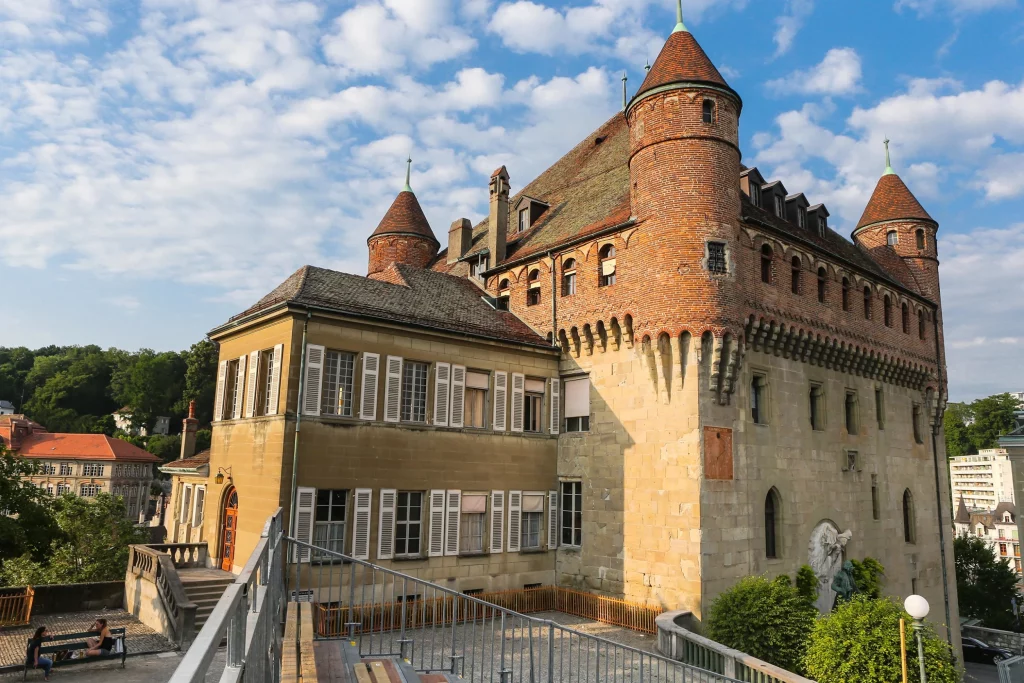
The Château Saint-Maire, built from 1397 to 1425, served as the fortified residence of the Bishops of Lausanne. Located in Lausanne, Switzerland, it currently functions as the seat of the cantonal government, hosting the Council of State of Vaud. This Swiss heritage site is classified as a national significance.
Details about Chateau St. Maire:
Location: Lausanne, Switzerland
Construction Period: 1397-1425
Builder: Bishops of Lausanne
Architectural Style: Ghibelline style of architecture
Current Status: The seat of the Cantonal Government / Swiss Cultural Property of National Significance
Current Owner: Canton of Lausanne
23. Castle Hinwil
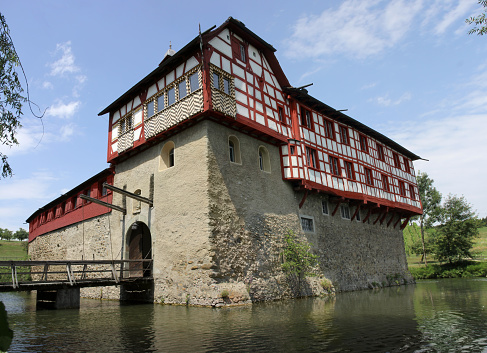
Castle Hinwil, a Swiss heritage site of national significance, dates back to the 13th century.
Details about Castle Hinwil:
Location: Hinwil, Switzerland
Construction Period: 13th century
Builder: Unknown
Architectural Style: Medieval architecture
Current Status: Swiss Cultural Property of National Significance
Current Owner: County of Hinwil
24. Castelgrande Castle
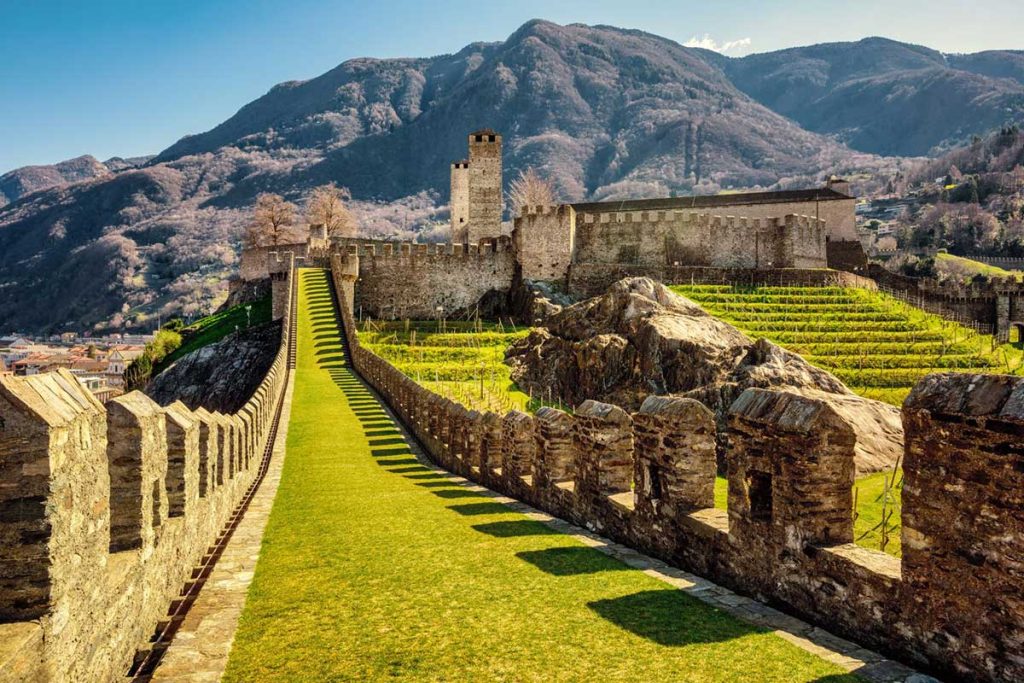
Castelgrande Castle, located in Bellinzona, Switzerland, is one of three impressive castles that collectively form a UNESCO World Heritage site. These castles, including Castelgrande, Castello Montebello, and Castello Sasso Corbaro, were vital defensive structures during medieval times, with Castelgrande playing a significant role in Roman defense. It is the oldest among the three castles.
Details about Castelgrande Castle:
Location: Bellinzona, Switzerland
Construction Period: 13th century
Builder: Unknown
Architectural Style: Medieval architecture
Current Status: UNESCO World Heritage Site
Current Owner: City of Bellinzona
25. Aile Castle
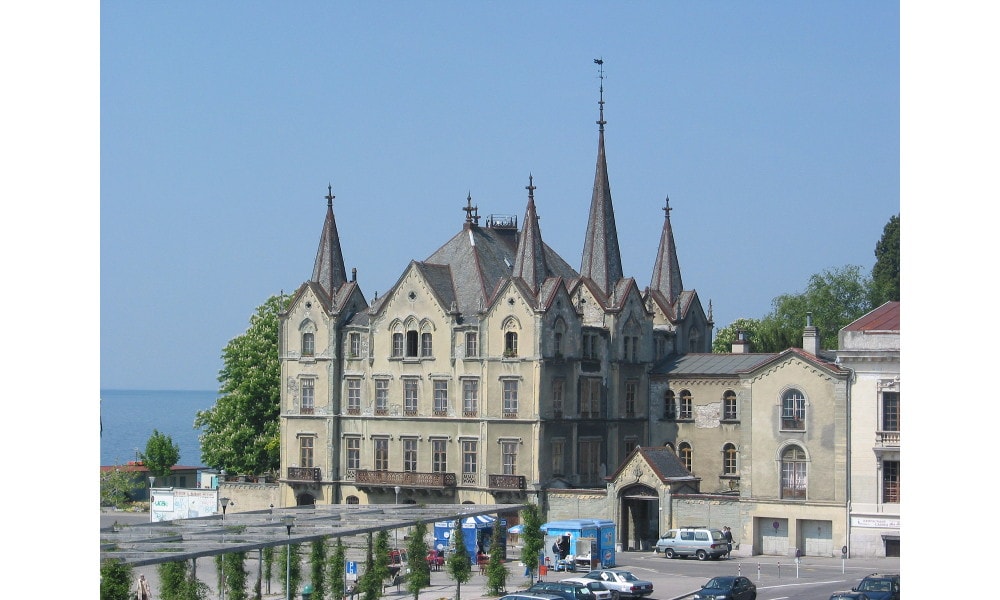
Aile Castle, situated in Vevey, Switzerland, is a Swiss heritage site of national significance. It was constructed between 1840 and 1846, replacing a 17th-century castle on the same site. Designed in a Neo-Gothic architectural style, the castle remains well-preserved and is open to the public.
Details about Aile Castle:
Location: Vevey, Switzerland
Construction Period: 1840-1846
Builder: Unknown
Architectural Style: Neo-Gothic style
Current Status: Swiss Cultural Property of National Significance
Current Owner: Canton of Vaud
26. Aigle Castle
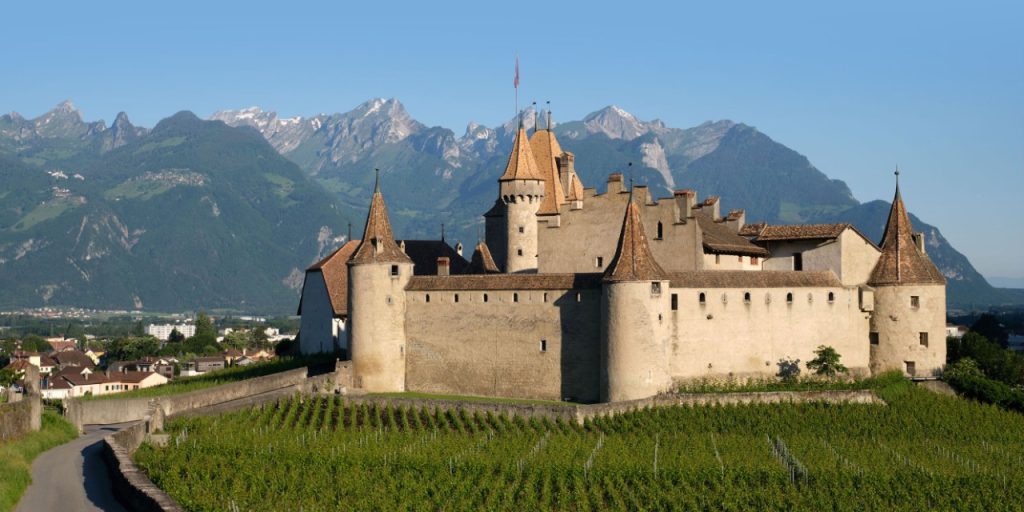
Aigle Castle, located in the municipality of Aigle, Switzerland, is a Swiss heritage site of national significance. It was initially built in the 12th century by the Knights of Eagle and the Militias of Allio. Over the centuries, the castle underwent significant renovations. In the late 18th century, it was acquired by the Municipality of Aigle and transformed into a museum accessible to the public.
Details about Aigle Castle:
Location: Aigle, Switzerland
Construction Period: 12th century
Builder: Knights of Eagle, the Militias of Allio
Architectural Style: Gothic style
Current Status: Museum / Open to the public
Current Owner: Municipality of Aigle
27. Aarburg Castle
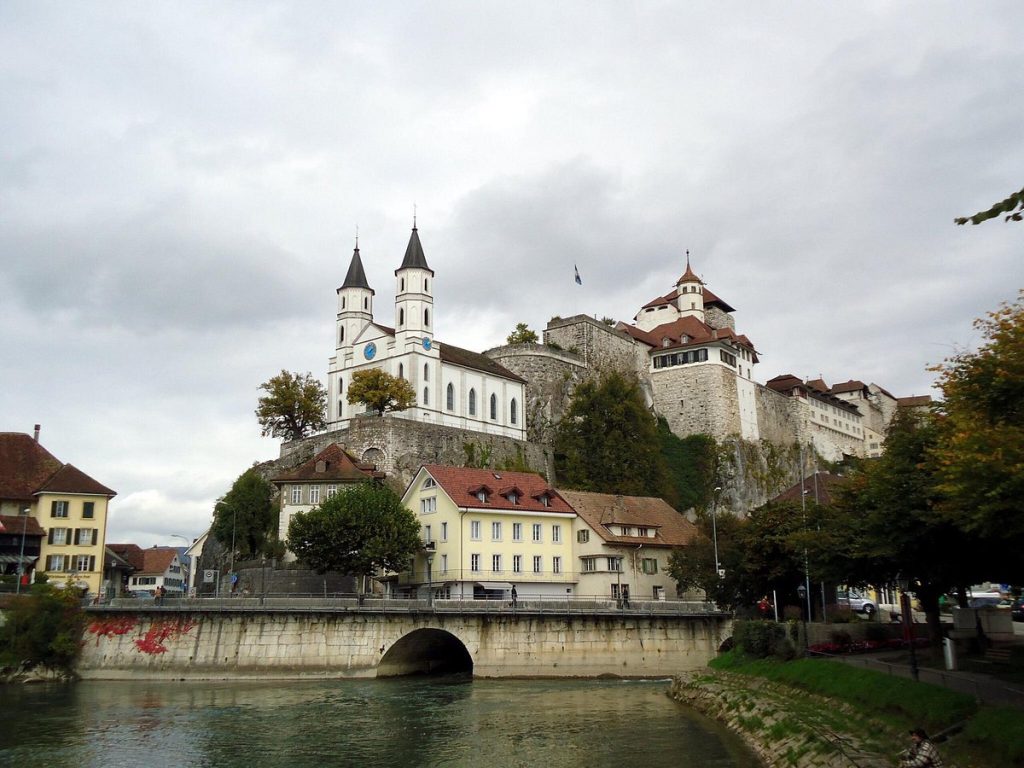
Aarburg Castle, situated in Aarburg, Switzerland, in the canton of Aargau, occupies a strategic position on the narrow point of the Aare River. Built in the early 13th century by the Lords of Büron, it served as a defensive stronghold. Today, the castle is classified as a Swiss heritage site of national significance and houses the Kantonale Jugendheim, which rehabilitates juvenile offenders.
Details about Aarburg Castle:
Location: Aargau, Switzerland
Construction Period: 13th century
Builder: Lords of Büron
Architectural Style: Medieval architecture
Current Status: Kantonale Jugendheim / Swiss Heritage Site of National Significance
Current Owner: Canton of Aargau
